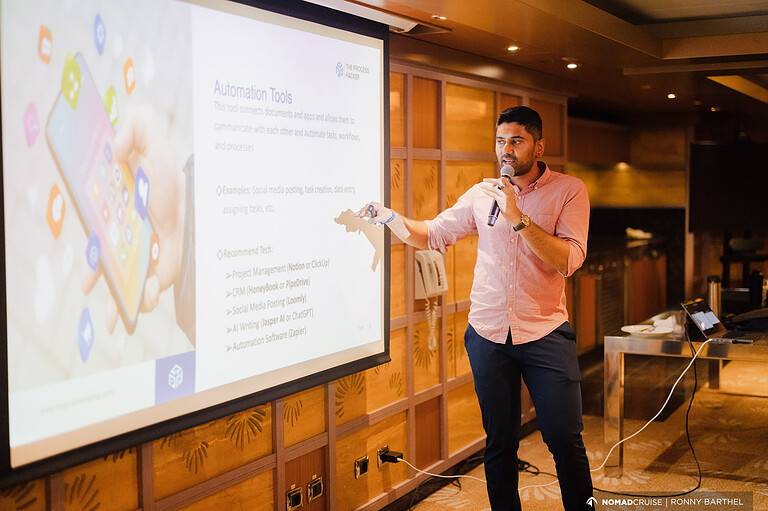How to Identify Issues Using Kepner Tregoe Potential Problem Analysis
Have you ever felt overwhelmed by everything that could go wrong in your business?
As a small business owner, every day brings new challenges and the potential for problems lurking just around the corner. Just when you think you’ve got a handle on handling issues, something unexpected arises that threatens to derail your carefully laid plans.
While problems and setbacks are inevitable, allowing uncertainty to paralyzes you into inaction is not. That’s where the Kepner Tregoe Potential Problem Analysis method comes in.
This versatile technique offers a structured yet simple way to proactively uncover potential pitfalls before they materialize into full-blown crises. Like the famed superhero and all-around problem solver MacGyver, KT PPA gives you the tools to identify issues and devise clever solutions using whatever is at hand.
In this post, I’ll break down the steps to help you employ your inner MacGyver so you can feel more in control when dealing with whatever trouble-tripping challenges come your way.
What is Kepner Tregoe Potential Problem Analysis?
Kepner Tregoe Potential Problem Analysis (PPA) is a methodological approach developed by Charles Kepner and Benjamin Tregoe. It is designed to help you proactively identify potential problems before they occur. This strategy utilizes a structured framework for situational appraisal, analyzing, and prioritizing risk assessment, focusing on preventing future issues and minimizing their impact.
It’s beneficial in complex projects or operations where identifying potential threats is essential for maintaining smooth and efficient workflows. The importance of this methodology is well-documented in various management guides, including publications by McGraw Hill.
By applying this technique, you can make informed decisions that safeguard your project’s success and enhance your operational reliability.
Why Should You Use Kepner Tregoe Potential Problem Analysis?
Ever feel like you’re constantly putting out fires instead of steering towards your goals? The truth is every decision, every project, and every plan carries potential pitfalls. What if you could anticipate and prepare for those obstacles before they derail you?
Mastering the Kepner Tregoe PPA is a game-changer, and here’s why:
- Proactive Risk Management: Don’t wait for problems to arise. Identify and address them before they escalate.
- Informed Decision-Making: Make choices based on a comprehensive understanding of potential consequences.
- Improved Planning: Create robust plans that account for potential roadblocks.
- Increased Efficiency: Minimize wasted time and resources by avoiding preventable issues.
- Enhanced Confidence: Tackle challenges head-on with a clear understanding of potential problems.
That’s where the Kepner Tregoe (KT) Potential Problem Analysis comes in. It’s a proven methodology that equips you with the tools to identify and assess potential problems. It’s like having a roadmap for navigating uncertainty, allowing you to make informed decisions and proactively manage risks.
How to Use Kepner Tregoe Potential Problem Analysis
When you’re tasked with managing a project, anticipating and mitigating risks is crucial. This is where Kepner Tregoe PPA shines. It’s a methodological approach that helps you pinpoint potential issues before they morph into actual problems.
Let’s dive into leveraging this robust framework to bolster your project’s success rate:
- Identify Potential Issues: Start by scanning your project for any signs that might indicate future complications.
- Identify Likely Root Causes: Analyze the identified issues to understand their underlying causes.
- Take Preventive Actions: With a clear understanding of the root causes, develop and implement strategies to mitigate these risks.
- Prepare Contingent Actions and Triggers: Set up contingency plans and define specific triggers that will activate these plans if needed.
By integrating these steps into your project management approach, you ensure not only a proactive stance against potential setbacks but also a robust strategy for dealing with them should they arise.
For a comprehensive understanding of each step and how to implement them effectively, check out the full tutorial, which provides detailed insights into mastering the Kepner Tregoe PPA.
#1) Identify Potential Issues
Before diving into the technicalities, it’s vital to set a clear framework for what you’re safeguarding against potential problems.
State the Circumstances
Firstly, articulate the specific action or plan you wish to protect. Consider what you aim to achieve and identify what might be at risk. This step sets the stage for a focused analysis.
List Potential Issues
Next, think about what could derail your outlined action or plan. Identify potential future deviations that could turn into significant obstacles. This is about foreseeing possible pitfalls and preparing accordingly.
Prioritize Issues Using Your Knowledge and Experience
With a list of potential issues at hand, use your experience and knowledge to gauge which issues require immediate attention. Ask yourself: Which problem poses the greatest threat to your plan? Prioritizing allows you to allocate your resources more effectively.
Prioritize Using By Evaluating Risk
Finally, each identified issue will be assessed in terms of probability and severity. Determine how likely each issue is to occur and the potential impact if it does. Label these risks as High, Medium, or Low, refining further with pluses or minuses to capture nuances. Focus on the issues with the highest combination of probability and impact first.
This structured approach to Kepner Tregoe PPA equips you with the tools to proactively manage potential problems, steering your projects toward successful outcomes with minimized risks.
For more detailed guidance on each step, delve into the comprehensive tutorial that walks you through the nuances of effectively implementing this analysis method.
#2) Identify Likely Root Causes

Understanding the underlying causes of potential issues is critical for effective problem management. This step ensures you’re not just treating symptoms but are addressing the core problems that could compromise your project’s success.
Consider Causes for Your Potential Issues
Identify and list the causes that might lead to each potential problem you’ve previously outlined. It’s essential to explore how these causes are interconnected and could culminate in significant challenges.
For each potential issue, delve into the specific factors that could be responsible. Ask yourself, “What could cause this problem?” and “What else might contribute to this scenario?” This will provide a clear map of cause-and-effect relationships, helping you understand and anticipate where things could go wrong.
By methodically breaking down the causes of potential issues, you position yourself to take proactive steps that can significantly mitigate risks before they evolve into actual problems. This strategic foresight is what makes Kepner Tregoe PPA a valuable asset in any project manager’s toolkit.
For a deeper exploration of identifying and managing root causes, proceed to the detailed explanations in the full tutorial.
#3) Take Preventive Actions
Once you’ve identified and understood the root causes of potential problems, the next crucial step is to implement preventative actions. This stage focuses on actions that directly address these causes to reduce the likelihood of their impact.
Begin by listing actions that can actively prevent or diminish the identified causes. This involves considering interventions that are both effective and feasible within your project’s constraints, a process often informed by decision analysis and risk analysis.
Consider what can be done to mitigate each cause. What steps can you take right now to prevent these future problems from arising? How can these actions be implemented in a practical and cost-effective way?
Assign clear responsibility to team members or departments for each action, drawing on the Kepner Tregoe method for situation appraisal. Allocating the necessary resources and setting realistic timelines for completion are vital.
This ensures accountability and facilitates a structured approach to problem-solving, recognizing human nature and organizational dynamics.
By preemptively addressing the causes of potential problems, you significantly enhance your projects’ resilience. This proactive approach is not just about avoiding issues but also about ensuring smooth and efficient project execution.
For comprehensive strategies and detailed actions, refer to the full tutorial, which will guide you through each preventive measure step by step, employing rational manager techniques to optimize outcomes.
#4) Prepare Contingent Actions and Triggers

After identifying potential issues and their root causes and setting preventive measures, the final step in the PPA process is to prepare for the possibility that problems might still occur. This involves creating effective contingency plans and establishing clear triggers for these plans.
Create a Plan to Reduce the Potential Impact
Begin by preparing actions in advance that will mitigate the impact if a potential problem does materialize. Assign specific responsibilities, allocate the necessary resources, and set realistic timelines for each action. It’s also important to determine who will deactivate these measures once the risk has passed.
Consider the actions that will be most effective in minimizing the impact of each potential problem. What steps can be taken to ensure the quickest, most cost-effective, and efficient recovery?
Create Triggers for Contingencies
Identify clear indicators or triggers that will activate your contingency plans. Depending on the nature of the risk and the specific circumstances, these triggers can be automatic or manual, which is preferable to ensure a timely response. Employing a Kepner Tregoe approach to situational appraisal can help you develop a nuanced understanding of these triggers.
Determine how you will recognize that a potential problem has occurred. What signs or signals will prompt the initiation of your contingent actions? Setting these triggers ensures that your response to issues is as swift and effective as possible. For instance, a sudden shift in project data might serve as an example that triggers an alternative response strategy.
By meticulously preparing both contingent actions and triggers, you enhance your project’s resilience against unexpected challenges. This structured approach not only prepares you for potential causes that may happen but also equips your team with the tools and training to handle them adeptly.
For a detailed walkthrough of implementing these strategies, refer to the full tutorial, which provides comprehensive guidance on making decisions, analyzing possible causes, and establishing a proactive defense against project risks. Using the Kepner and Benjamin method helps refine this process further, especially in identifying and addressing the root cause of any encounter problems.
Key Considerations For Your Systematic Approach to Problem Solving
PPA isn’t just about fixing what’s broken; it’s about preventing it from breaking in the first place. Here’s how to make it work for you:
- Define Success: What does a flawless implementation look like? Crystal-clear objectives set the stage for identifying any deviation from your ideal outcome.
- Brainstorm Potential Problems: Don’t hold back. Enlist diverse perspectives to uncover every possible “what if” scenario that could derail your project.
- Prioritize and Analyze: Not all problems are created equal. Rank them by severity and likelihood, then dig deeper into the most critical ones. What could trigger these issues? What’s the potential fallout?
- Develop Action Plans: Create targeted strategies for each high-priority problem. These are your contingency plans – the steps you’ll take to either prevent a problem altogether or minimize its impact.
- Integrate and Adapt: Weave your action plans into your project timeline. Set clear triggers that alert you when it’s time to implement a solution. And remember, PPA is an ongoing process. Regularly review and refine your plans as the project evolves.
PPA isn’t just for complex projects; it’s a valuable tool for any uncertain situation. You may be launching a new product, rolling out a software update, or simply making a critical business decision. PPA gives you the foresight to anticipate challenges and the agility to respond effectively.
By embracing PPA, you’re not just managing risks – you’re taking control of your future.
Final Thoughts on Kepner Tregoe Potential Problem Analysis
Overall, the Kepner Tregoe PPA is a highly effective tool for identifying and preventing potential issues in any business or personal situation.
We’ve explored the key steps of the process, from establishing the problem to implementing a solution, and it’s clear that this method can greatly improve decision-making and problem-solving skills. But beyond its practical benefits, what I appreciate most about this technique is its ability to cultivate critical thinking and a proactive mindset.
By using a structured approach like Kepner Tregoe PPA, we become more equipped to tackle challenges head-on instead of shying away or reacting in a panic. And let’s be real: In today’s fast-paced and ever-changing world, we could all use some extra tools in our arsenal to navigate uncertainties.
For other Kepner Tregoe frameworks, read these articles:
If you haven’t already incorporated Kepner Tregoe PPA into your problem-solving repertoire, I recommend trying it! Let’s confidently push past those potential problems and watch your success soar!







